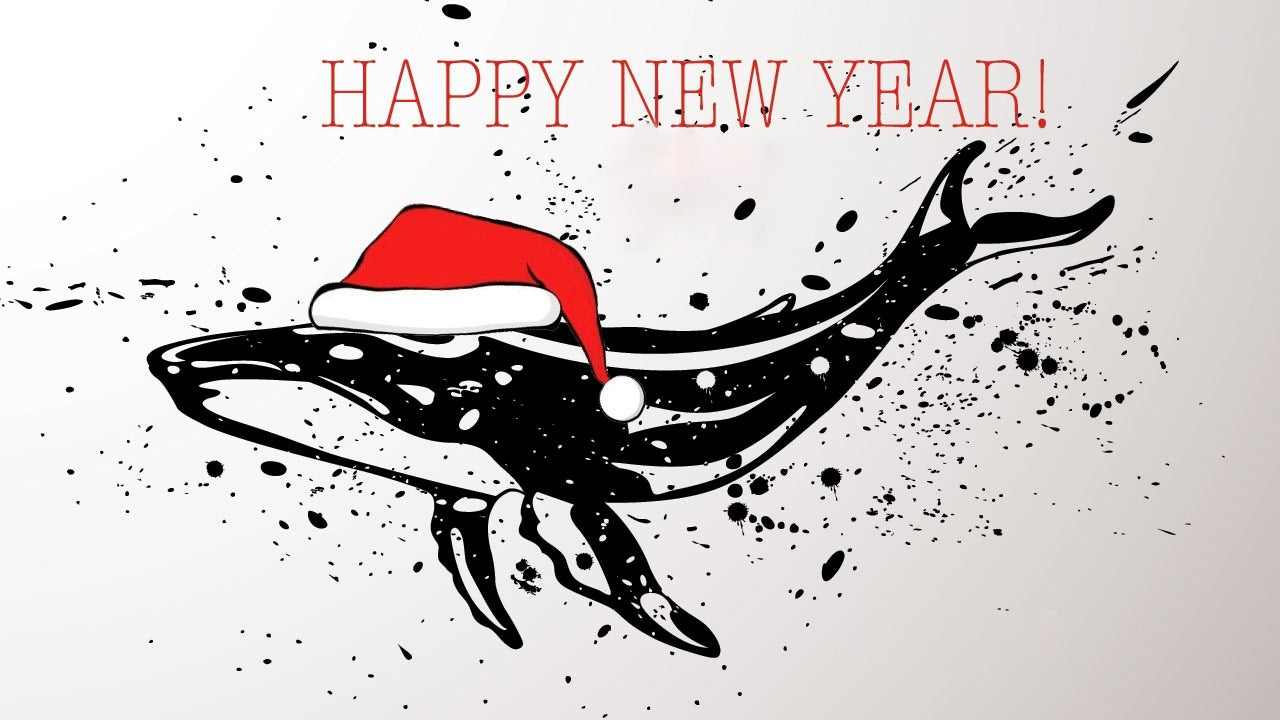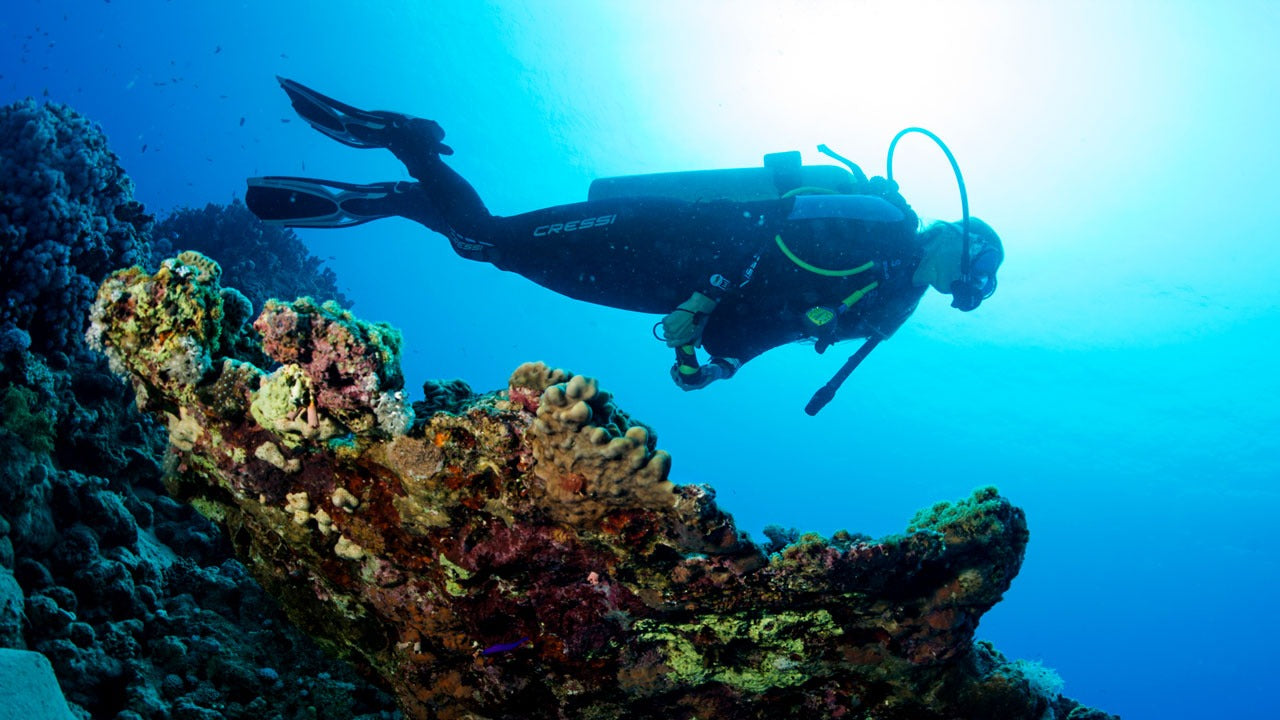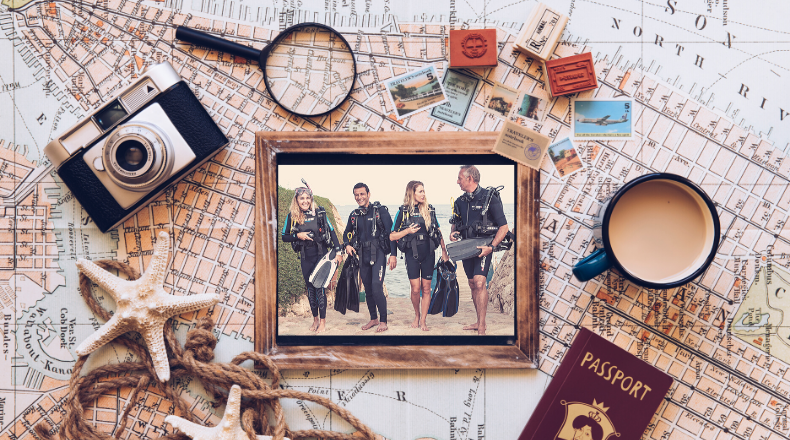End of the Year Divers Digest: the Highlights of 2016

As 2016 is coming to an end we’ve decided to take a look at some of the most impressive achievements and brightest diving-related events that took place during the year.
World Records
2016 has brought us four diving-related Guinness World Records - for the longest underwater breath-hold, the longest open-water scuba dive, the longest underwater human chain and the longest shark dive.
The first record we’re going to look at sounds absolutely unbelievable. On February 28th at the 17th Mediterranean Dive Show in Barcelona Aleix Segura from Spain held his breath for 24 minutes 3 seconds, subsequently breaking the previous O2 assisted breath-hold record held by Goran Colak with 22 minutes 30 seconds. The peculiarity of O2 assisted breath-hold is that the diver breathes pure Oxygen for a period before the attempt, which allows him for much longer breath-holds than normally possible.
Another mind-blowing record was set on July 20th by a turkish diver Cem Karabay. Karabay has performed the longest ever open-water scuba dive by staying under for 142 hours, 42 minutes and 42 seconds. As you may have guessed, the number 42 is not accidental here. In such an unusual way the record-holder has decided to commemorate the 42nd anniversary of Turkey’s invasion of Cyprus.
The next record was set by not one, but two divers. Kuwaiti scuba divers Reem Abdullah Al Edan and Mubarak Abuhaimad broke the women’s (five hours) and men’s (seven hours and 49 minutes) world records for the longest underwater dive with sharks. Both divers chose such an unusual way to raise awareness for women’s rights and the plight of Arab women in the Middle East.
Speaking of diving simultaneously, one hundred seventy-three Italian scuba divers broke the Guinness World Record for the longest underwater human chain. The event was organised by RAID’s Italian office. All divers used standard scuba equipment and followed marked buoys in the water. The previous record of 110 divers was set off the coast of the French island of Reunion in the Indian Ocean in 2013.
This year’s AIDA 2016 Freediving World Pool Championships in Turku, Finland has also brought many stunning performances and 3 new world records. Greek Freediver Giorgos Panagiotakis and Polish freediving superstar Mateusz Malina have both achieved the same incredible 300m / 984ft dive in Dynamic (DYN) to share the World Record in this discipline. What’s more, Mateusz Malina has also set a new Dynamic No-Fins (DNF) World Record at 244m / 800ft, which is nearly 5 lengths of an Olympic sized 50m swimming pool on one breath! Another athlete from the Polish team Magdalena Solich has broken the Dynamic No-Fins (DNF) World Record with a 185m / 607ft swim.
As for the depth disciplines, a well-known freediver from New Zealand William Trubridge has shattered two world records at the annual Vertical Blue competition in the Bahamas. An athlete performed a Free Immersion dive to a mind blowing depth of 124m / 407ft with a dive time of 4min 54sec and a freedive to 102m / 336ft in the discipline of constant no-fins (CNF). Women have also shown some impressive results. Sayuri Kinoshita of Japan has set a new CNF world record at 72m, while Jeanine Grasmeijer from the Netherlands broke the women’s World Record in Free Immersion with a dive to 92 meters.
Reefs and Wrecks
Looking for new places to dive in 2017? Here are a few fascinating underwater man-made attractions created during the last twelve months.
If you like watching reefs, you will soon be able to visit five new artificial “super reefs” in the waters off Panama City Beach in Florida, USA. Standing 18 feet / 5.5 meters tall, weighing 18 tons / 16 metric tons and placed about 74 feet / 22.6 meters below the surface, these limestone reefs will create an ecosystem and habitat for fish, crabs, lobsters and more for divers and fisherman to enjoy.

Photo credit: Visit Panama City Beach
Wreck diving lovers will also be able to visit many new wrecks in different spots of the planet. In this article we’ll highlight two that we find most impressive.
The first one is a magnificent 324 foot tanker vessel Lady Luck that has been sunk on July 23rd just off the coast of Pompano Beach in South Florida. The ship is located only a mile and a half east of the city's pier and is surrounded by several other wrecks, that all together form a unique Shipwreck Park. What’s more, Lady Luck itself contains 16 staterooms, the captain’s deck, galley, engine room and tanker holding bays that divers will be able to explore. If you want to find out more information about this incredible dive site, visit the Shipwreck Park Pompano Beach website.
Those divers, who like to travel to more exotic locations, are now free to roam about the cabin of an Airbus A300 jet, that was sunk at a depth of about 75 feet / 23 meters in Aegean Sea near the Kusadasi resort, Turkey. The plane stretches 177 feet in length and is one of the largest planes sunk as an artificial reef in the world. It took more than two hours for the wreck to reach the seafloor. Turkish authorities hope that the reef will lure both marine life and divers.
Finally, 2016 has brought us two magnificent underwater art exhibitions - a photo exhibit at the Vandenberg artificial reef off the Florida Keys and the collection of lifelike statues near Canary Islands.
The Vandenberg, which sits 90 feet / 27 meters below the surface and about seven miles south of Key West is now a home for 12 waterproof photo illustrations, created by Austrian art photographer Andreas Franke. This exhibit is a continuation of Franke’s “Sinking World” series which were displayed on the Vandenberg in 2011, two years after the ship became an artificial reef.
As for the Canary Islands exhibit, it became Europe’s first underwater museum - Museo Atlantico. This new installation by a British artist Jason deCaires Taylor was opened in February of this year and currently features 70 lifelike statues of people doing everyday activities, such as reading on their tablets or posing for selfies. The collection was designed to display the ever changing and sometimes destructive impact of humans in the modern world. The present exhibit is only the first phase of a planned 10 phases. The creators aim to display as many as 300 sculptures once the project is complete. The installation is made from non-toxic, pH-neutral concrete and has already attracted some curious neighbors. The previously pretty barren area has now seen a lot of activity. Around a hundred octopuses, a thousand sardines and a few rare angel sharks were spotted near this underwater museum.

Tech Innovations
New technological solutions for different spheres of life are being developed every day, and diving is not an exception. In addition to various new and advanced pieces of equipment some great digital solutions for divers have been introduced during the past year.
Deepblu, for instance, has launched a new social network built for the diving community. The platform allows users to create a profile to interact with the network of divers, dive businesses and conservationists. Each profile includes all the diver’s certifications as well as a digital dive log book, which can be either created manually, or automatically with a compatible dive computer such as Deepblu’s own COSMIQ+ or a 3rd-party computer via the open-source software Subsurface. The diver can also choose to post an overview of his/her diving adventures. The platform is now in beta and you can visit it here.
Another revolutionary collection of apps was created by PADI together with I Love the Sea. A suite of three new apps, collectively called Must of the Sea was designed to bring the virtual reality revolution to the scuba space and allow both divers and non-divers explore a selection of exhilarating dive sites in the Red Sea. These immersive adventures can be further enhanced with the use of virtual reality goggles.
The Must of the Sea suite includes three Apps: “Feel”, “View and Plan” and “Pro Guide”. “Feel,” the first app launched, enables users to virtually explore Shipwrecks, Caves or Gardens and Sea Life in most exotic locations of the Red Sea. The second app, “View and Plan”, includes the comprehensive virtual tour around the seven finest dive sites in the Red Sea. It also offers some great dive planning tools, such as geo-positioning information, route planning and panoramic 360-degree photos. Both “Feel” and “View and Plan” are now available for download to your mobile device from themustofthesea.com, the Apple App Store, Google Play and Oculus store. The third app, “Pro Guide”, is scheduled to launch in the coming months.
Moving on to the underwater filming solutions, Diveye has developed an innovative system that makes it possible to capture a complete video footage from deep freediving dives and stream it live. The special underwater drone creates consistent, high-definition video content that can help to improve the post-dive technique analysis, increase the safety of each dive and open up the sport to a new global audience. The Diveye drone can operate on a max depth of 200m with more than 2m/s vertical speed giving plenty of room for future records.
Best Videos of the Year
Our first video is a truly extraordinary footage, capturing a mysterious ghost shark or, as it’s also called chimaera. This dead-eyed, wing-finned fish species that lives in the deep sea is a relative of sharks and rays. Even though the ghost sharks are not new to science, we still know very little about them. The video below had been released by the Monterey Bay Aquarium Research Institute in California and has helped to shine new light on these curious creatures. The footage is so unique because it’s the first time the pointy-nosed blue chimaera has been seen alive in its natural habitat.
Another video that went viral on the internet is the beautiful footage of GoPro Awards recipients Ocean Ramsey and Juan Oliphant as they film the whale sharks in the Philippines to document migrating populations.
We’d like to end this article with the video of one tiny creature that has once made an appearance in our blog already - an adorable Rossia pacifica or the googly-eyed squid. This bright purple creature with giant, stuffed-animal-like eyes was filmed by the researchers from the Nautilus exploration vessel and made waves on the internet. You are welcome to watch the video again with us.
Last but not least, here is a list with some of the most popular articles of the year from our blog. Enjoy!




